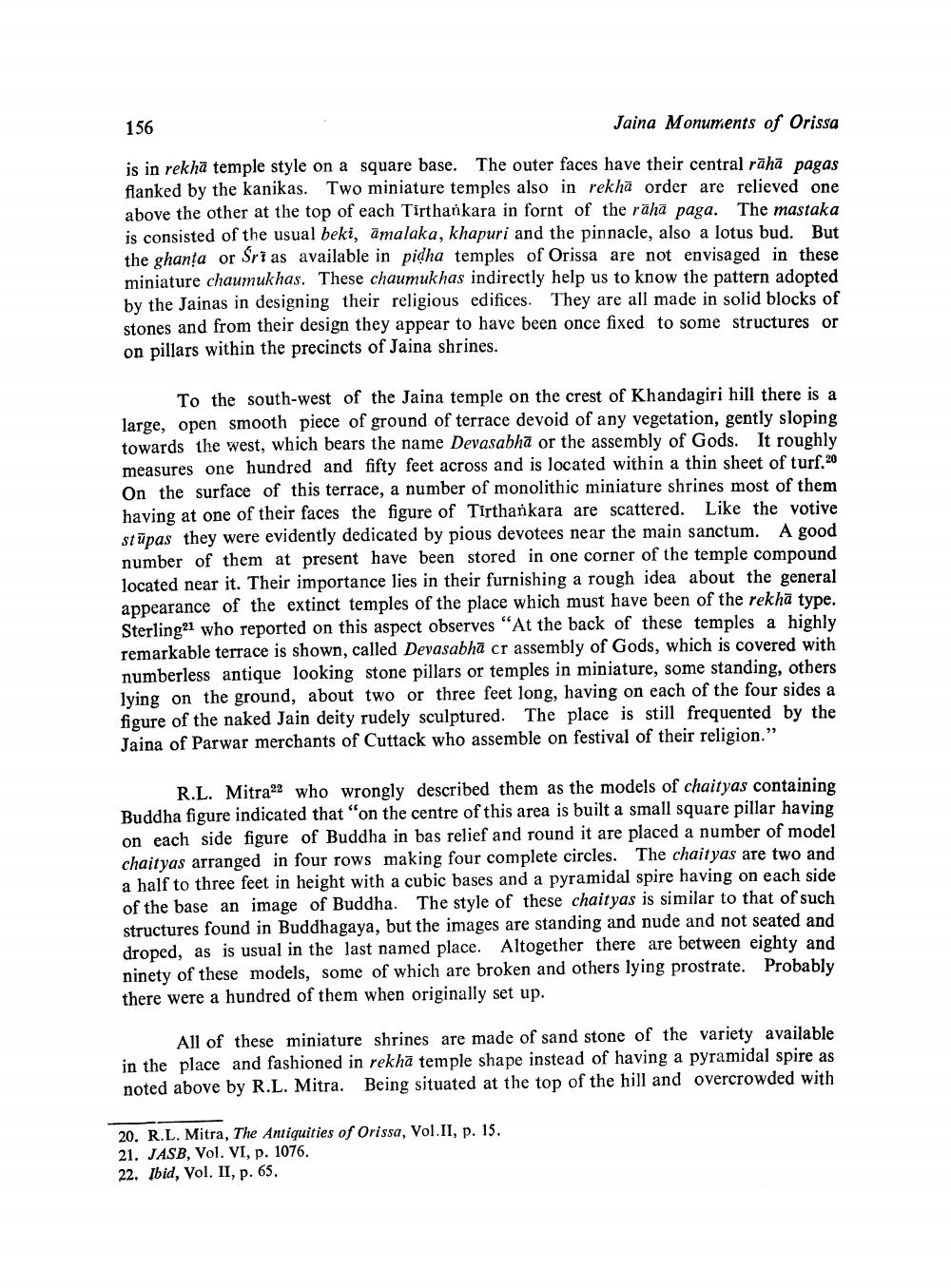________________
156
Jaina Monuments of Orissa
is in rekha temple style on a square base. The outer faces have their central rahā pagas flanked by the kanikas. Two miniature temples also in rekha order are relieved one above the other at the top of each Tirthankara in fornt of the raha paga. The mastaka is consisted of the usual beki, amalaka, khapuri and the pinnacle, also a lotus bud. But the ghanta or Srt as available in pidha temples of Orissa are not envisaged in these miniature chaumukhas. These chaumukhas indirectly help us to know the pattern adopted by the Jainas in designing their religious edifices. They are all made in solid blocks of stones and from their design they appear to have been once fixed to some structures or on pillars within the precincts of Jaina shrines.
To the south-west of the Jaina temple on the crest of Khandagiri hill there is a large, open smooth piece of ground of terrace devoid of any vegetation, gently sloping towards the west, which bears the name Devasabha or the assembly of Gods. It roughly measures one hundred and fifty feet across and is located within a thin sheet of turf.20 On the surface of this terrace, a number of monolithic miniature shrines most of them having at one of their faces the figure of Tirthankara are scattered. Like the votive stupas they were evidently dedicated by pious devotees near the main sanctum. A good number of them at present have been stored in one corner of the temple compound located near it. Their importance lies in their furnishing a rough idea about the general appearance of the extinct temples of the place which must have been of the rekha type. Sterling who reported on this aspect observes "At the back of these temples a highly remarkable terrace is shown, called Devasabha cr assembly of Gods, which is covered with numberless antique looking stone pillars or temples in miniature, some standing, others lying on the ground, about two or three feet long, having on each of the four sides a figure of the naked Jain deity rudely sculptured. The place is still frequented by the Jaina of Parwar merchants of Cuttack who assemble on festival of their religion."
R.L. Mitra who wrongly described them as the models of chaityas containing Buddha figure indicated that "on the centre of this area is built a small square pillar having on each side figure of Buddha in bas relief and round it are placed a number of model chaityas arranged in four rows making four complete circles. The chaityas are two and a half to three feet in height with a cubic bases and a pyramidal spire having on each side of the base an image of Buddha. The style of these chaityas is similar to that of such structures found in Buddhagaya, but the images are standing and nude and not seated and droped, as is usual in the last named place. Altogether there are between eighty and ninety of these models, some of which are broken and others lying prostrate. Probably there were a hundred of them when originally set up.
All of these miniature shrines are made of sand stone of the variety available in the place and fashioned in rekha temple shape instead of having a pyramidal spire as noted above by R.L. Mitra. Being situated at the top of the hill and overcrowded with
20. R.L. Mitra, The Antiquities of Orissa, Vol.II, p. 15.
21. JASB, Vol. VI, p. 1076. 22. Ibid, Vol. II, p. 65.




